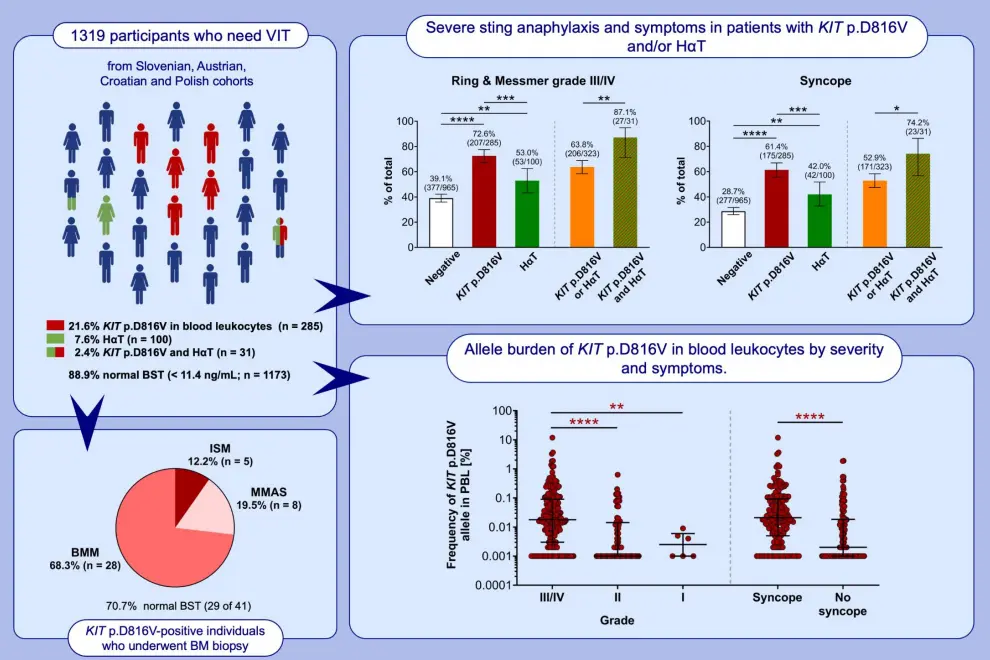Golnik clinic study links severe allergic reactions to genetic condition
A multi-year study by researchers at the University Clinic of Respiratory and Allergic Diseases at Golnik, NW Slovenia, has found that patients suffering from life-threatening allergic reactions often have an underlying genetic disease. The discovery has significant implications for clinical practice and the management of these high-risk patients.
The study involved 1,502 participants from Slovenia, Austria, Croatia, and Poland. Collaborating institutions included the Medical Faculty of Graz, University Hospital Centre Zagreb, the Medical Faculty of Krakow, and the US National Institute of Health, with the Golnik clinic, located north of Kranj, acting as the leading partner.
The research aimed to explore the genetic background of the life-threatening allergic reaction known as anaphylaxis, with the goal of identifying patients prone to the most severe reactions. The findings of the study were published in a peer-reviewed article in the prestigious allergy journal Allergy: European Journal of Allergy and Clinical Immunology in mid-March.
Previously, allergic reactions were believed to be unpredictable, with no way to anticipate the severity a patient might experience. But this research changes our view of the mechanisms of anaphylaxis, the Golnik clinic pointed out, explaining that patients with the most severe allergic reactions may have a genetic condition.
The study demonstrated the feasibility of testing patients with a history of severe anaphylactic reactions for genetic factors that could indicate an increased risk of future severe allergic episodes. Based on these findings, patients diagnosed with the identified genetic disorder can now receive a different, more intensive treatment regimen, including lifelong monitoring and management.

Graphic summary of a study in which researchers from the Golnik clinic found a link between anaphylaxis and a genetic disease. Photo: Golnik clinic
Peter Kopač, head of the allergology unit at the Golnik clinic and co-author of the study, explained that the research has confirmed that up to 30% of patients who are allergic to wasp or bee venom and are therefore treated with immunotherapy have a genetic disorder, namely mast cell disease.
"This is a very large group that we are now paying particular attention to. These patients are at higher risk of the next reaction and we know that treatment is also less successful. That is why we are now treating them differently, they need life-long immunotherapy and yet they still have to carry an auto-injector with adrenaline," Kopač said.
Peter Korošec, head of the clinical Immunology and Molecular Genetics Lab at the clinic and the project's lead researcher, highlighted the significant number of patients involved in the study, spanning four countries.
"Despite being treated in different healthcare systems, the results were remarkably consistent, underlining the substantial weight of our findings," he stressed.
Korošec also noted the significance of the entire high-tech segment of the genetic testing having been conducted in Slovenia. This achievement underscores the exceptional level of Slovenian medical research in the fields of genetics and immunology.
Every year, the Golnik clinic treats around 200 patients with the most severe forms of allergy. It is estimated that two to three people die of anaphylaxis in Slovenia every year, most of them being allergic to insect stings, medicines or food.
Anaphylaxis is a systemic hypersensitivity reaction that develops within minutes of initial exposure to an allergen. It affects the respiratory and cardiovascular systems, causing changes in the skin and mucous membranes.
The initial signs of anaphylaxis include itching of the skin, often on the palms, soles, or behind the ears, along with the appearance of hives, skin flushing, sneezing, or facial swelling. They appear very rapidly and can quickly progress to a feeling of a lump in the throat, shortness of breath, low blood pressure, dizziness, and collapse. Abdominal cramps, vomiting, and diarrhoea may also be present.


